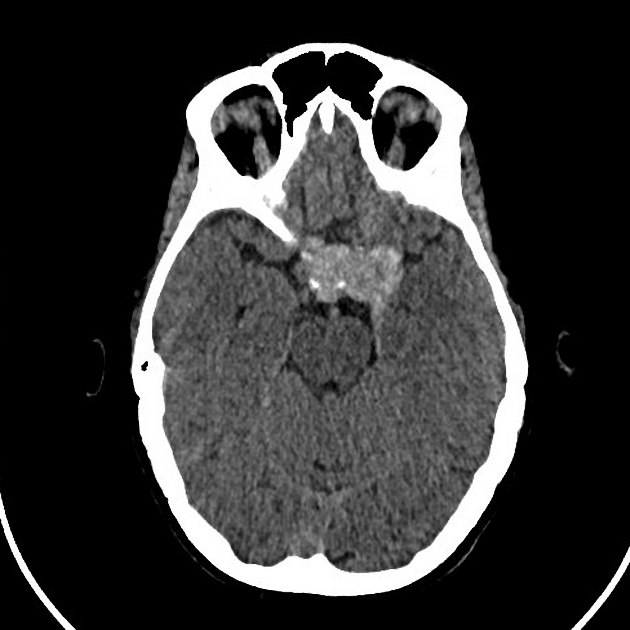Nelson syndrome is a rare disorder observed in patients with Cushing disease that have undergone bilateral adrenalectomy. It involves enlargement of an existing adrenocorticotropic hormone-secreting pituitary tumor, typically an adenoma, after surgical resection of the adrenal glands.
On this page:
Epidemiology
Studies have found a huge variation in the incidence of Nelson syndrome. Incidence rates have varied from 6-47% in adults to 25-66% in pediatric populations undergoing bilateral adrenalectomy 1. It has been identified that the incidence increases with follow-up time 1. The presence of high basal adrenocorticotropic hormone (ACTH) is the best predictor for development of Nelson syndrome 1.
Clinical presentation
The following clinical features may be observed 1:
- skin hyperpigmentation, because melanocyte-stimulating hormone (MSH) and ACTH share the same precursor molecule, proopiomelanocortin (POMC)
- headaches, due to displacement of meninges
- visual field deficits (e.g. bitemporal hemianopia), due to compression of the optic chiasm
- diabetes insipidus, due to compression of posterior pituitary
- altered sensation over V1 and V2 sensory areas, due to direct invasion of the cavernous sinus
- sudden intracranial hypertension, due to necrosis (usually a late sign)
Pathology
Presumably, Nelson syndrome represents accelerated growth of an existing ACTH-secreting pituitary microadenoma due to the loss of the normal adrenal negative feedback mechanisms.
Microscopic appearance
The tumors stain positive for ACTH and MSH, similar to pituitary adenomas observed in Cushing disease. The tumors are PAS positive.
Radiographic features
MRI is the preferred imaging modality for Nelson syndrome. To establish a diagnosis of Nelson syndrome, a steady growth of the tumor needs to be demonstrated. This can be established with high resolution T1- and T2-weighted images and application of gadolinium contrast, see: pituitary microadenoma.
Treatment and prognosis
Surgical resection of the pituitary adenoma is the gold-standard treatment for Nelson syndrome. If neurosurgery cannot be performed, radiation therapy is the next best management option. Some studies have shown that gamma knife surgery may also be effective 2.
History and etymology
This syndrome was first reported by Nelson et al. in 1958 3.





 Unable to process the form. Check for errors and try again.
Unable to process the form. Check for errors and try again.